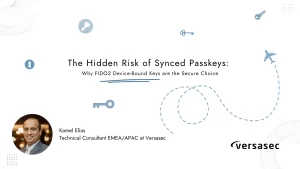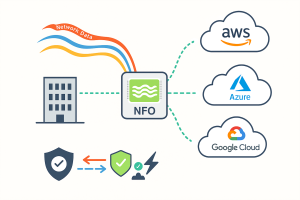
In today’s digital age, data is the cornerstone of modern business operations. Companies rely heavily on vast amounts of information—from customer details and financial records to intellectual property and internal communications—to stay competitive and function efficiently. However, this dependence also makes them prime targets for cybercriminals who constantly evolve their tactics to exploit vulnerabilities. Without robust data protection measures, organizations risk losing more than just data—they risk losing trust.
Cybercrime’s global impact continues to escalate, with losses reaching $8.4 trillion in 2023 alone. According to IBM Security, the average cost of a data breach surpassed $4.88 million in 2024. This makes strong data security practices more essential than ever. Businesses must take proactive steps—such as encryption, access control, and incident response planning—to protect sensitive information, ensure business continuity, and comply with legal obligations. Secure Data provides expert solutions to help organizations build security frameworks that stay ahead of evolving threats.
What Is a Security Policy?
A security policy is a formal document outlining the rules, protocols, and best practices for safeguarding an organization’s digital assets and infrastructure. It acts as a blueprint that ensures all systems, processes, and personnel adhere to baseline security standards.
An effective security policy delivers multiple benefits:
-
Preserves Data Confidentiality, Integrity, and Availability: Ensures data is accurate, accessible to authorized users, and shielded from breaches.
-
Safeguards Critical Information: Establishes clear handling protocols for sensitive data, including PII and intellectual property.
-
Reduces Vulnerability: Identifies risks and sets mitigation and incident response strategies to reduce potential harm.
-
Enables Operational Security: Translates abstract security principles into practical procedures across departments.
-
Promotes Transparency: Demonstrates the organization’s security stance to partners, customers, and regulators.
-
Ensures Regulatory Compliance: Helps meet requirements of regulations like GDPR and HIPAA by addressing compliance gaps.
Why Security Policies Matter
Security policies define how organizations protect valuable data assets such as personal identifiable information (PII) and trade secrets. Beyond mitigating cyber risks, these policies help fulfill compliance obligations and assign clear responsibilities to employees and third parties, thereby reducing the likelihood of unauthorized data access or misuse.

Understanding Data Security
Data security refers to the tools, processes, and protocols used to prevent unauthorized access, modification, or theft of sensitive data. As organizations become increasingly reliant on digital infrastructure, protecting this data becomes critical. The consequences of neglect can be severe.
The Impact of Data Breaches
Data breaches can cause long-term damage far beyond the initial incident. Some key risks include:
-
Financial Fallout: Recovery costs, legal fees, and regulatory fines can reach millions—potentially bankrupting small businesses.
-
Brand Damage: A breach undermines trust, causing customers to leave and tarnishing the company’s public image.
-
Legal Liability: Violations of data privacy regulations can trigger lawsuits and steep penalties.
-
Customer Attrition: Lost trust often drives customers to competitors, affecting long-term profitability.
Examples from Recent Breaches:
-
T-Mobile (2023): A second major breach in two years affected 37 million users and led to lawsuits and public criticism.
-
MOVEit: Exposed personal data of 6 million Louisiana residents, sparking regulatory and reputational consequences.
-
Trello: A public API flaw leaked 15 million user records, increasing phishing risks.
-
Change Healthcare: A ransomware attack disrupted services and leaked medical data, resulting in $22 million in ransom and reputational harm.
Core Elements of a Strong Data Security Policy
A comprehensive security policy includes various interconnected elements that ensure long-term resilience:
1. Data Classification
Organizing data by sensitivity—e.g., public, confidential, restricted—helps assign appropriate protection levels. High-risk data (like PII or financial records) demands stronger safeguards.

2. Access Controls
Implementing Role-Based Access Control (RBAC) ensures that users access only the data necessary for their roles. Two-Factor Authentication (2FA) adds another layer of security.
3. Data Encryption
Data should be encrypted both in transit and at rest. Even if intercepted, encrypted data remains unreadable without the proper keys. Secure Data’s encrypted drives help ensure secure storage and transfer.
4. Incident Response Plan
A predefined plan enables organizations to respond swiftly and efficiently to breaches, minimizing impact and speeding up recovery. It includes team responsibilities, notification procedures, and post-incident reviews.
5. Auditing and Monitoring
Routine audits and real-time monitoring detect anomalies, assess compliance, and reveal vulnerabilities before they’re exploited.
6. Remote Access Guidelines
VPNs, strict access rules, and secure authentication help protect systems accessed by remote employees.
7. Backup and Recovery
Frequent backups stored securely and tested regularly ensure data is recoverable in the event of a disaster or attack.
8. Employee Training
Educating staff on identifying threats like phishing or malware significantly lowers human-error-based risks.
How to Develop and Implement Effective Policies
1. Engage Key Stakeholders
Involve departments like IT, HR, and Legal to align policy with business needs and compliance obligations.
2. Conduct a Risk Assessment
Identify and assess the risk to critical data assets. Use vulnerability scanners and threat intelligence tools to locate weak points.
3. Draft Clear and Concise Policies
Include:
-
Purpose and scope
-
Roles and responsibilities
-
Acceptable use policies
-
Relevant legal and regulatory references
4. Train Employees Continuously
Security awareness training—during onboarding and as ongoing refresher sessions—helps prevent human error.
5. Evaluate and Evolve
Regular reviews and updates are necessary to reflect evolving threats and changing business processes. Communicate policy changes clearly to all stakeholders.
Common Pitfalls to Avoid
-
Vague Definitions: Use precise, unambiguous language and provide examples to avoid confusion.
-
Generic Policies: Customize policies to reflect your industry, risks, and operational model.
-
Neglecting BYOD Risks: Without clear rules, personal devices can introduce vulnerabilities. Define secure usage guidelines.
-
No Accountability: Assign clear responsibilities to ensure policy enforcement and foster a culture of ownership.
Tools to Support Security Policies
To effectively enforce policies, businesses must adopt relevant technologies:
1. Firewalls & Network Protection
Next-Gen Firewalls and IDS/IPS tools defend against external threats and monitor internal traffic anomalies.
2. Endpoint Protection
EDR systems, antivirus software, and Mobile Device Management (MDM) protect devices and ensure policy compliance.
3. Cloud Security
Encryption, data redundancy strategies like the 3-2-1 backup method, and access controls safeguard cloud-hosted data.
4. Vendor Risk Management
Tools like VRM and SIEM help evaluate and monitor third-party vendors for compliance and security alignment.
Legal and Compliance Considerations
Key Regulatory Frameworks:
-
GDPR (EU): Requires transparency and strict controls over personal data.
-
CCPA (California): Grants rights over personal data access and deletion.
-
HIPAA (U.S.): Enforces safeguards over healthcare-related data.
-
PCI DSS: Sets standards for protecting payment card data.
Penalties for Non-Compliance:
-
GDPR: Up to €20 million or 4% of annual global turnover
-
CCPA: Up to $7,500 per violation
-
HIPAA: Up to $50,000 per violation; $1.5 million annually
Strengthen Your Defense with Proactive Security Policies
Effective data security policies are critical to protecting sensitive information, maintaining operational continuity, and complying with legal standards. By developing customized policies, involving stakeholders, conducting regular assessments, and deploying the right technologies, businesses can build a strong defense against growing cyber threats.
Secure Data’s FIPS 140-2 Level 3 compliant secure drives are an excellent solution for protecting sensitive data in air-gapped or high-security environments, offering features like Bluetooth-enabled access and hardware encryption to safeguard critical information.
About DT Asia
DT Asia began in 2007 with a clear mission to build the market entry for various pioneering IT security solutions from the US, Europe and Israel.
Today, DT Asia is a regional, value-added distributor of cybersecurity solutions providing cutting-edge technologies to key government organisations and top private sector clients including global banks and Fortune 500 companies. We have offices and partners around the Asia Pacific to better understand the markets and deliver localised solutions.
How we help
If you need to know more about Protecting Company Data: Establishing Effective Security Policies, you’re in the right place, we’re here to help! DTA is Secure Data’s distributor, especially in Singapore and Asia, our technicians have deep experience on the product and relevant technologies you can always trust, we provide this product’s turnkey solutions, including consultation, deployment, and maintenance service.
Click here and here and here to know more: https://dtasiagroup.com/secure-data/










